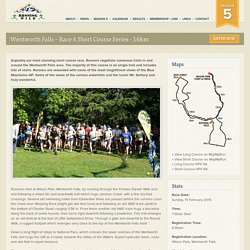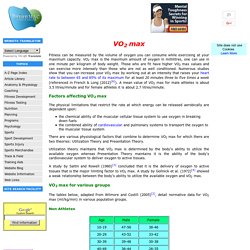

Strava Segments on your Edge 1000. Wentworth Falls – Race 4 Short Course Series. Arguably our most stunning short course race.

Runners negotiate numerous trails in and around the Wentworth Falls area. The majority of this course is on single trail and includes lots of stairs. Runners are rewarded with some of the most magnificent views of the Blue Mountains NP. Some of the views of the various waterfalls and the iconic Mt. Solitary and truly wonderful. Runners start at Wilson Park, Wentworth Falls, by running through the Charles Darwin Walk arch and following a mixed dirt and boardwalk trail which hugs Jamison Creek, with a few dry-foot crossings. Down a long flight of steps to National Pass, which crosses the lower reaches of the Wentworth Falls and hugs the cliff as it heads towards the Valley of the Waters. GeoSnapShot.com will be at the event to photograph all the action, so look your best and purchase your shots for just $6 each at www.GeoSnapShot.com. Race Records. VO2 Max. Fitness can be measured by the volume of oxygen you can consume while exercising at your maximum capacity.

VO2 max is the maximum amount of oxygen in millilitres, one can use in one minute per kilogram of body weight. Those who are fit have higher VO2 max values and can exercise more intensely than those who are not as well conditioned. Numerous studies show that you can increase your VO2 max by working out at an intensity that raises your heart rate to between 65 and 85% of its maximum for at least 20 minutes three to five times a week (referenced in French & Long (2012)[8]). A mean value of VO2 max for male athletes is about 3.5 litres/minute and for female athletes it is about 2.7 litres/minute. Factors affecting VO2 max The physical limitations that restrict the rate at which energy can be released aerobically are dependent upon: There are various physiological factors that combine to determine VO2 max for which there are two theories: Utilization Theory and Presentation Theory.
Maximum Heart Rate. Athletes who use a heart rate monitor as a training aid need to identify their actual maximum heart rate in order to determine their appropriate training zones.

Maximum heart rate (HRmax) can be determined by undertaking a maximum heart rate stress test which although relatively short does require you to push your body and your heart to the very limit. It can also be predicted using a formula but the variation in actual HRmax of 95% of individuals of a given age will lie within a range of ±20 beats/minute (Gellish 2007)[1]. Calculation of Maximum Heart Rate The easiest and best known method to calculate your maximum heart rate (HRmax) is to use the formula HRmax = 220 - Age Dr. Research conducted by Gulati et al. (2010)[3] identified that the traditional male-based calculation (220-age) overestimates the maximum heart rate for age in women.
Londeree and Moeschberger HRmax = 206.3 - (0.711 × Age) Miller et al HRmax = 217 - (0.85 x Age) USA Researchers. Atlas of Knee MRI Anatomy.
Creating optimum stride length and cadence « Canute’s Efficient Running Site. In my post yesterday, I raised the question of the optimum ratio of stride length to cadence. Speed is the product of stride length and cadence, but if we wish to increase speed efficiently, it is not simply a matter of increasing one or the other. There is little doubt that efficient running requires a fairly rapid cadence.
Video recordings of elite athletes demonstrate that most run with a cadence of at least 180 steps /min (90 per foot), and many recordings of elite 10K runners demonstrate a cadence of 200 steps per minute or slightly more. However, there are several reasons why there is likely to be a point beyond which increase in cadence become inefficient. First, there are factors related to the internal (molecular) mechanism of muscle contraction. Therefore, as speed increases there will come a point beyond which it is no longer efficient to increase cadence.
However, the issue of the most efficient way to increase stride length is a challenging question. Repositioning the limbs.